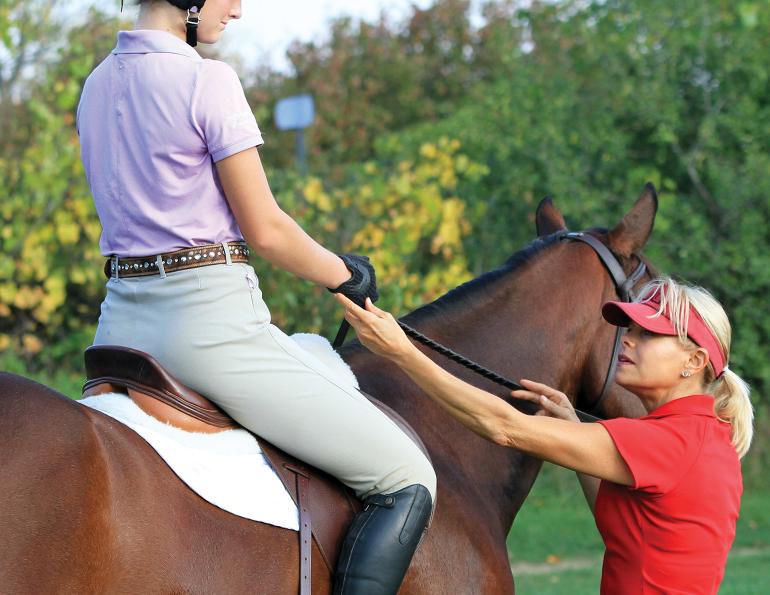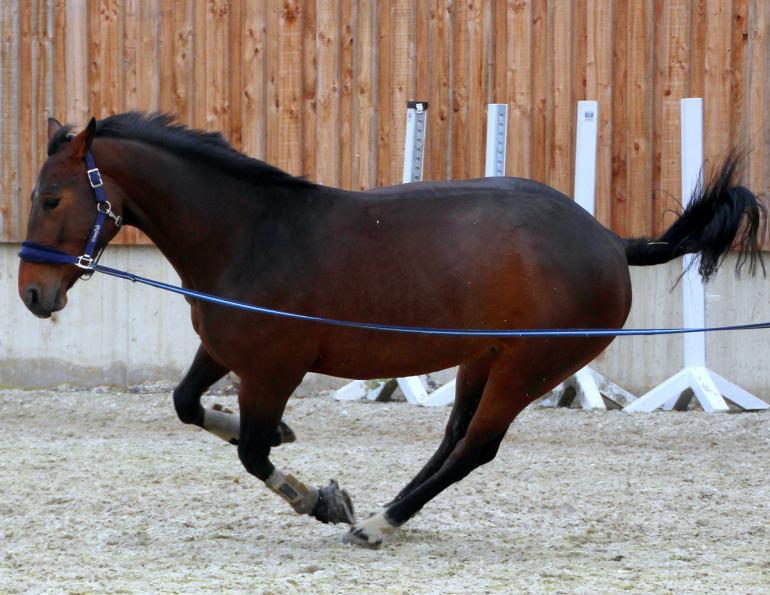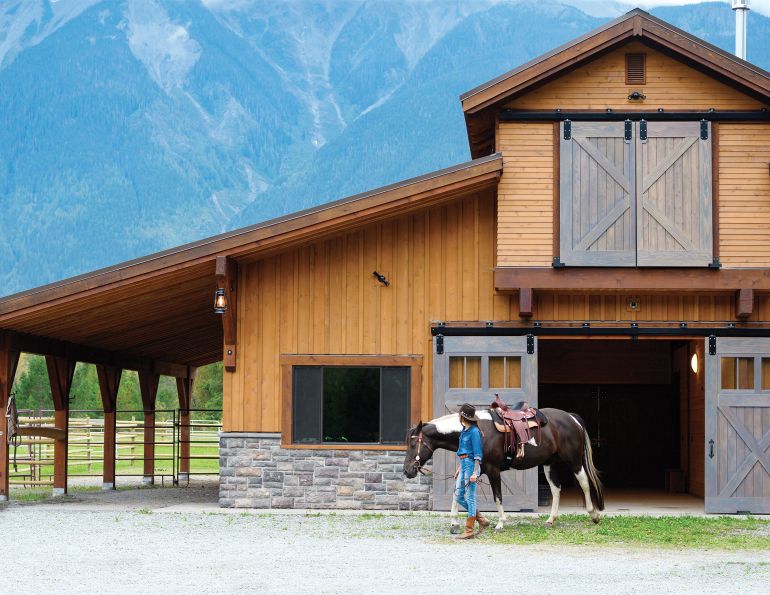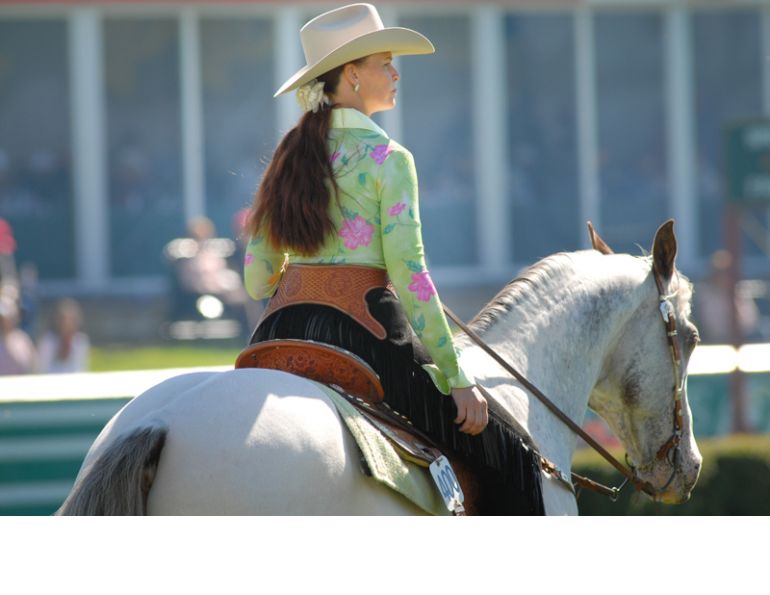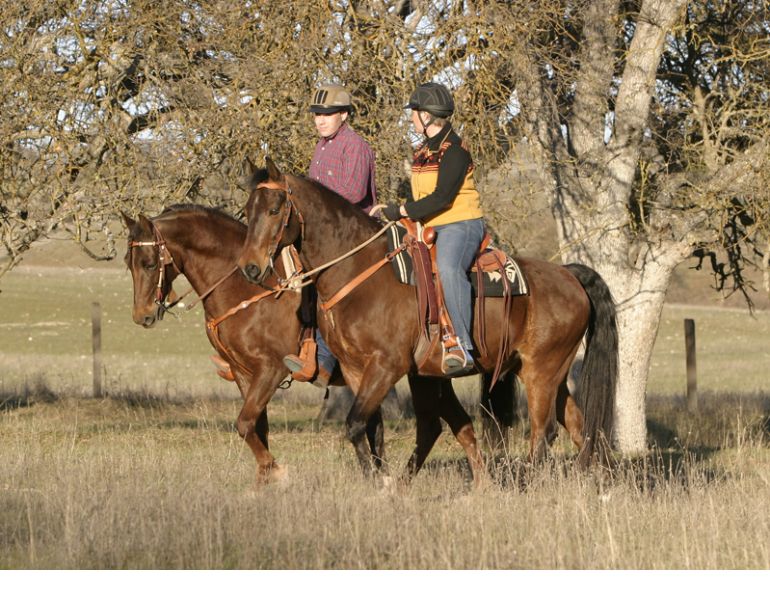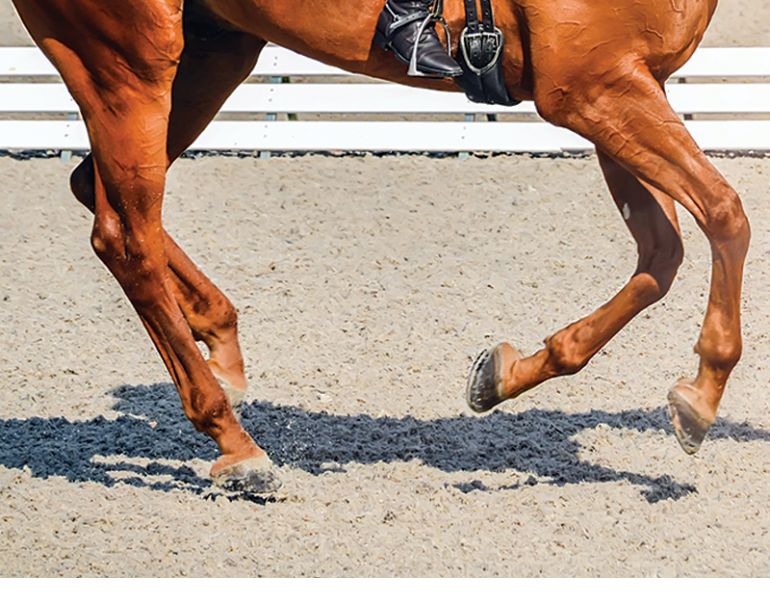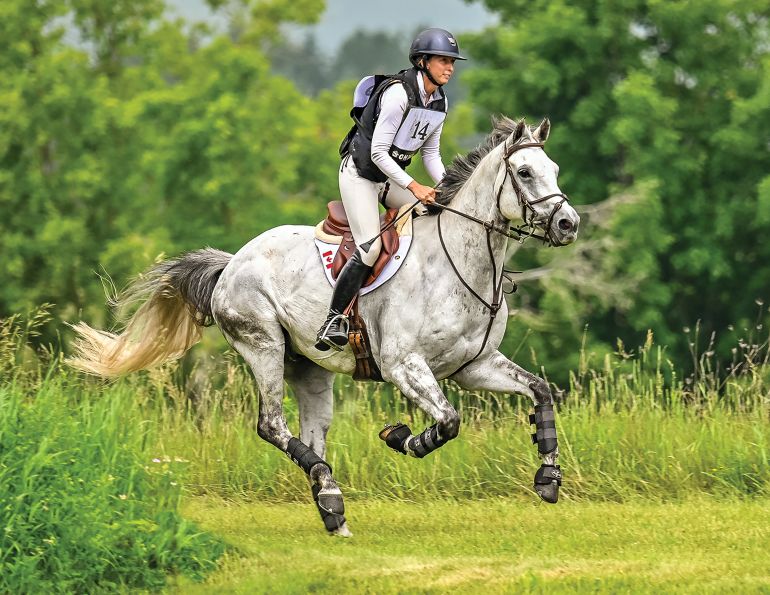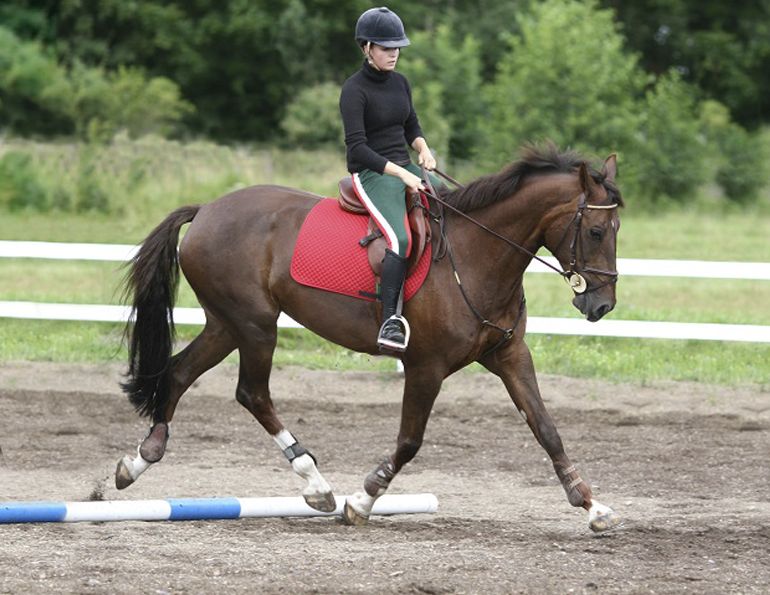By Lindsay Grice, Equestrian Canada coach and judge
I learned the fundamentals of equitation to the repetitive tune of Heads up! Heels down! while trotting around and around the riding school arena. I acquired the hows of riding in those early years, but my whys were typically answered with tradition: That’s just the way it’s done. Thinking back, if I’d grasped the reasoning behind the technical skills of riding, I’d have been more motivated to persevere in those drills without stirrups!
The essentials of correct rider position cross all disciplines — Western, Hunter Seat, or Dressage. Why is the classic riding position worth perfecting? There’s logic behind every essential.
1. Stability is matter of safety.
A secure position in the saddle anchors the rider for jumping, spinning, or stopping. Simply put, if your horse spooks east, a strong position keeps you from going west.
2. Your horse will thank you for going easy on his back.
Though horses must adapt to the unpredictability of a novice rider’s weight shifts, a rider who “makes it look easy” moves less in the saddle, which is less distracting and annoying to their horse.
Researchers now have technology to read all pressures, bumps, and shifts a horse actually feels while being ridden.
Dr. Hilary Clayton, researcher in equine and rider biomechanics, says the amount of force we apply to a horse’s back depends on how we ride and what gait we’re riding. Dr. Clayton says that any weight on an equine back can cause hollowing, but you can reduce these risks by not overloading the horse, riding with a soft balanced seat, and sitting closer to the front of the saddle.
Related: How to Master the Sitting Trot
3. The judge will reward a strong, balanced seat.
Aside from a low equitation score, an unbalanced seat leads to “weightier” deductions on the judge’s card. Out-of-sync riding affects your horse’s performance. Horses don’t score as well when riders are left behind over jumps or left behind in reining spins. Flying changes don’t look smooth when the rider is flying around in the saddle. In short, rider floppiness detracts from a harmonious partnership in a rail or flat class.
In equitation classes, the judge will assess rider posture, position, and effectiveness. Some riders just try too hard — confusing posing with poise. A rigid or overarched back can’t follow the horse’s movement and absorb shock. There’s a balance between strength and stiffness.
4. A secure seat keeps a lid on mixed messages sent to your horse.
A strong yet supple position is a stable foundation from which to communicate with precision to your equine partner. With less motion in the saddle, your legs and reins can deliver just the right timing and intensity of aids. Having seen the technology used in equitation science to quantify signals from rider to horse, I’m more intentional than ever of the signals I convey as I ride.
Related: Winning Tips for Flat Classes
Related: Pilates for Every Equestrian
Independent movement of your trunk, arms, and legs helps you stay in harmony with the motion of the horse as you communicate. With elasticity in your hip, elbow, and knee joints, you’ll avoid surprising your horse with abrupt aids or balancing on his mouth for stability.
EQUITATION HEAD TO TOE
English, Western and Dressage riders share most of the equitation essentials with minor variations between riding styles.
Eyes and Head
Chin up! Eyes up! was the second verse of my riding instructor’s Heads up! Heels down! tune. Yet, I was never quite clear — Where’s up? In the air? At my horse’s ears?
I tell my students: Where you look is where you’ll go. It’s futile to look down at the pylon you don’t want to run over, or the fence post you don’t want your horse to drift into. Instead, locate a destination dot ahead, in the dirt, that you do want your horse to travel over. If you’re riding a curve, turn your head to follow the curve.

It’s futile to look down at the pylon you don’t want to run over or the fence post you don’t want your horse to drift into.
In between plotting your destination dots, expand your gaze to locate a destination further along — the next jump around the corner or, for reiners, the arena centre. Big eyes anticipate the destinations of the other horses moving about in the arena, preventing a traffic collision.
As a judge I often note a rider staring too far ahead — directly across to the opposite side of a circle, for example. This looks unnatural and, practically speaking, detaches you from your horse. Soft eyes keep moving, scanning, and planning ahead.
Upper Body and Seat
Sit tall and upright in the saddle as if someone were lifting you up by the ears, stretching the curves out of your spine. However, there’s a fine line between straightness and stiffness. The American Quarter Horse Association (AQHA) rulebook describes it well — a flat, yet relaxed and supple back is to be rewarded.
Your seat moderates the length and tempo of your horse’s stride. Your hips should open and close with the swing of your horse’s movement, similar to following the motion of a playground swing. Locking your lower back will cause your seat to bounce in the saddle.
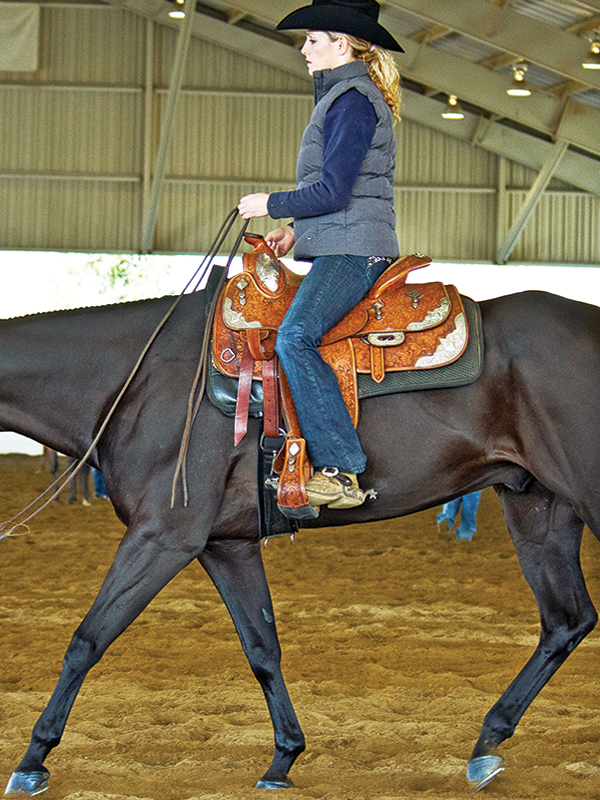
Sit tall and upright in the saddle, stretching the curves out of your spine. However, there’s a fine line between straightness and stiffness.
Related: Exercises to Correct Common Riding Faults
Related: Routines for a Balanced, Engaged Horse
I encourage the Western riders I coach to practice posting trot, capturing the feeling of influencing the tempo of their horses’ stride. Picture your horse trotting to the metronome set by your posting rhythm.
Hands and Arms
When riding with two hands, the Western or English rider should maintain a straight line from elbow to hand and through the rein to the corner of the horse’s mouth. Riders who hold their hands either above or below this line sacrifice the sensitivity to communicate clearly to their horses.
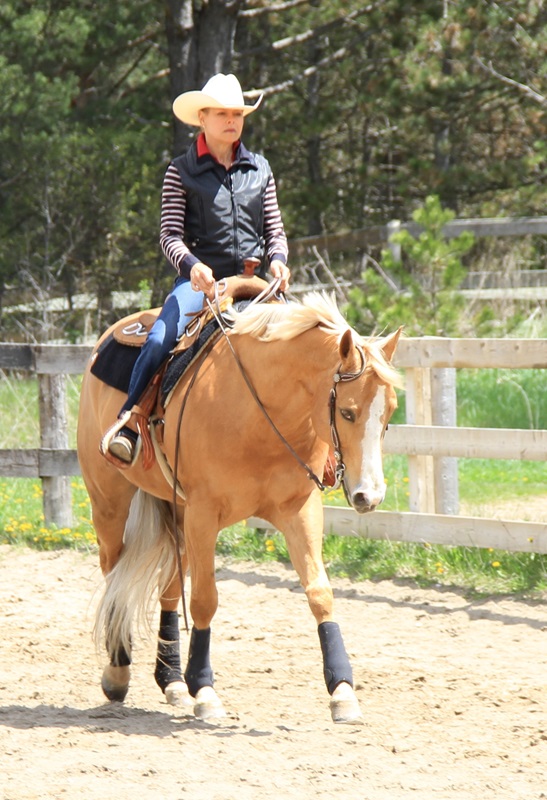
When riding with two hands, the Western or English rider should maintain a straight line from elbow to hand and through the rein to the corner of the horse’s mouth.
Your hands should operate approximately a bit-width apart, turned in at a 45-degree angle. If your hands are flat with thumbs pointing toward each other, your elbows will stick out.
Related: Rider Posture - What Is Actually Involved?
Related: What Riding Equipment is Allowed in the Show Ring?
Suppleness in all the joints — shoulders, elbows, wrists, and knuckles — allows your arm to follow the movement of your horse’s neck in the walk and canter. A supple arm opens and closes in the posting trot. The same elastic arm helps you unfold with the motion of the horse’s neck over a jump.
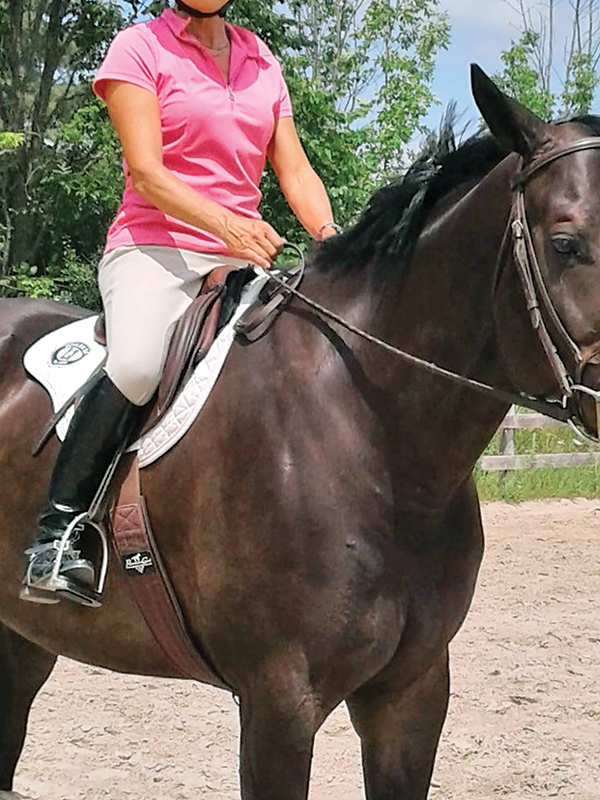
Suppleness in the all joints — shoulders, elbows, wrists, and knuckles — allows your arm to follow the movement of your horse’s neck in the walk and canter.
Soft contact is the standard set in most equine association rule books. As a judge, I’m required to penalize lack of connection in equitation and some Western classes.
Rein contact varies across riding disciplines. Western riders operating with leverage bits will have more visible rein relaxation as shanks return to neutral. In neck reining (required with a curb bit) your hand returns to “home” position — in an imaginary box in front of the saddle horn. If it takes more than roughly a six-inch hand movement to influence your horse, your reins are too long.
As AQHA horsemanship rules specify, “reins are adjusted for light contact with the horse’s mouth. At no time shall reins require more than slight hand movement to control the horse.”
Western riders ask: What do I do with my free hand? There are two options: either straight down by your side (prone to flapping around when novice riders get nervous) or bent at the elbow in a similar position as your rein hand (a better option). Either way, keep your upper arm aligned with your upper body and close to your side.
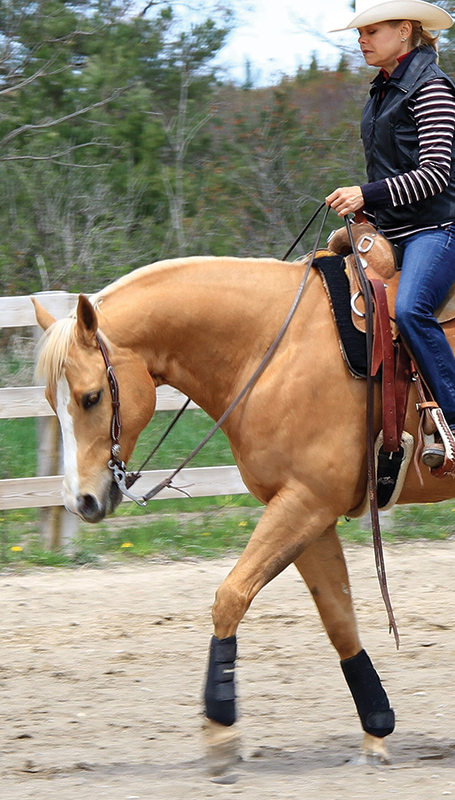
As AQHA horsemanship rules specify: “Reins are adjusted for light contact with the horse’s mouth. At no time shall reins require more than slight hand movement to control the horse.”
Legs
Why are riders instructed to keep their toes up and dancers to point theirs down?
Standing on the ball of your foot for posting or two-point position calls for tension in your ankle. A tense ankle is unable to function as a flexible shock absorber as it would if you stepped down into your heel. On the other hand, I meet riders who’ve been coached to step down in their heels to the exclusion of other equitation essentials. Jammed-down heels may evolve from posting the trot and cantering in two-point position, yet rarely riding those gaits in full seat. When I’m judging, I note these riders struggling with the sitting trot in equitation classes. When our heels are forced down, they lose their shock absorbing or communication ability. The usefulness of the leg is diminished, and the rider will not have the suppleness to apply subtle aids. I coach riders to allow their toes to turn out a little bit, flexing the ankle in and enabling them to communicate more effectively to the horse. A toe-in position will cause you to pinch the saddle with your knee, losing contact and stability with your calf.
Related: 7 Tips for Memorizing Patterns for Riding Courses
Related: From Flat to Fences
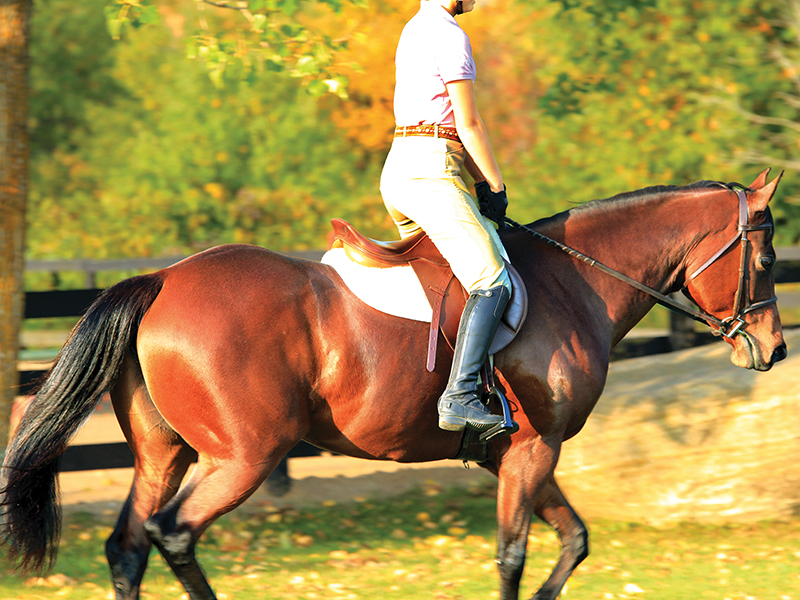
Standing on the ball of your foot for posting or two-point position calls for tension in your ankle. A tense ankle is unable to function as a flexible shock absorber as it would if you stepped down into your heel.
Practically speaking, lowered heels help prevent lost stirrups. Aside from a safety concern, a lost stirrup earns a five-point penalty on the judge’s scorecard in AQHA equitation or horsemanship, or a low score in equitation over fences.
Finally, dropping your heels provides a pause from your leg aids; a yes to reward your horse’s correct response.
Does your horse have enough impulsion? A dull horse never affords his rider a chance to rest and reposition the leg. Who can focus on deepening their heels when riding is an aerobic workout? Determine not to “babysit” your horse with nagging aids. A light horse in self-carriage is an equitation essential!
POSITION CHECKLIST
- Is my saddle balanced? Poor saddle fit makes for a losing battle in the pursuit of equitation goals! If your saddle doesn’t fit your horse, you’re facing an uphill struggle or a downhill slide. Countless times, I’ve climbed aboard a student’s horse only to find it’s their tack slipping their seat to the back of the saddle and causing their legs to slide forward. Or I’ve discovered a saddle elevated behind, tipping me forward, and it’s no wonder their legs naturally pendulum backwards!
- Is my stirrup the correct length? Stirrup length is a few inches longer for Western and Dressage seats than for Hunter seat. Yet, regardless of discipline, your knee and ankle joints must bend and flex in order to function as shock absorbers. Stirrups too long — you’ll find yourself reaching for them with your toe, losing suppleness and effectiveness in your ankle. Stirrups too short — you’ll be unable to sink into the saddle, sacrificing the influence of your seat aids. Aim for your stirrup to touch the bottom of your ankle bone. A little higher for jumping, with slight variations for rider preference and conformation.
- Am I taking breaks? In lessons, I give my students a variety of short drills targeted to any position problems they may have, working on them in three-minute segments — equitation commercials — in between other skills in my lesson plan. This avoids muscle fatigue that could lead to sloppy practice, developing another bad habit en route to correcting an existing one.
Understanding the whys of correct riding position — balance, safety and clear human-to-horse communication — makes equitation exercises more relevant. Your horse will thank you and all your hard work may just reflect on the horse show judge’s scorecard.
Related: The Many Hats of a Horse Show Judge
Related: When Things Go Wrong in the Show Ring
Photos are courtesy of Lindsay Grice



